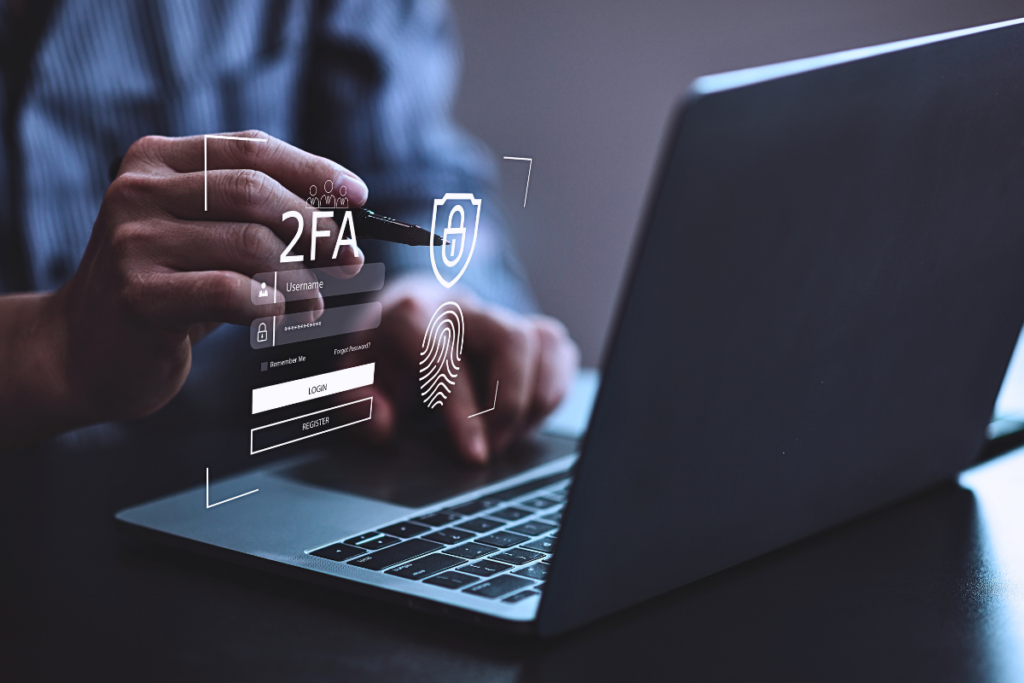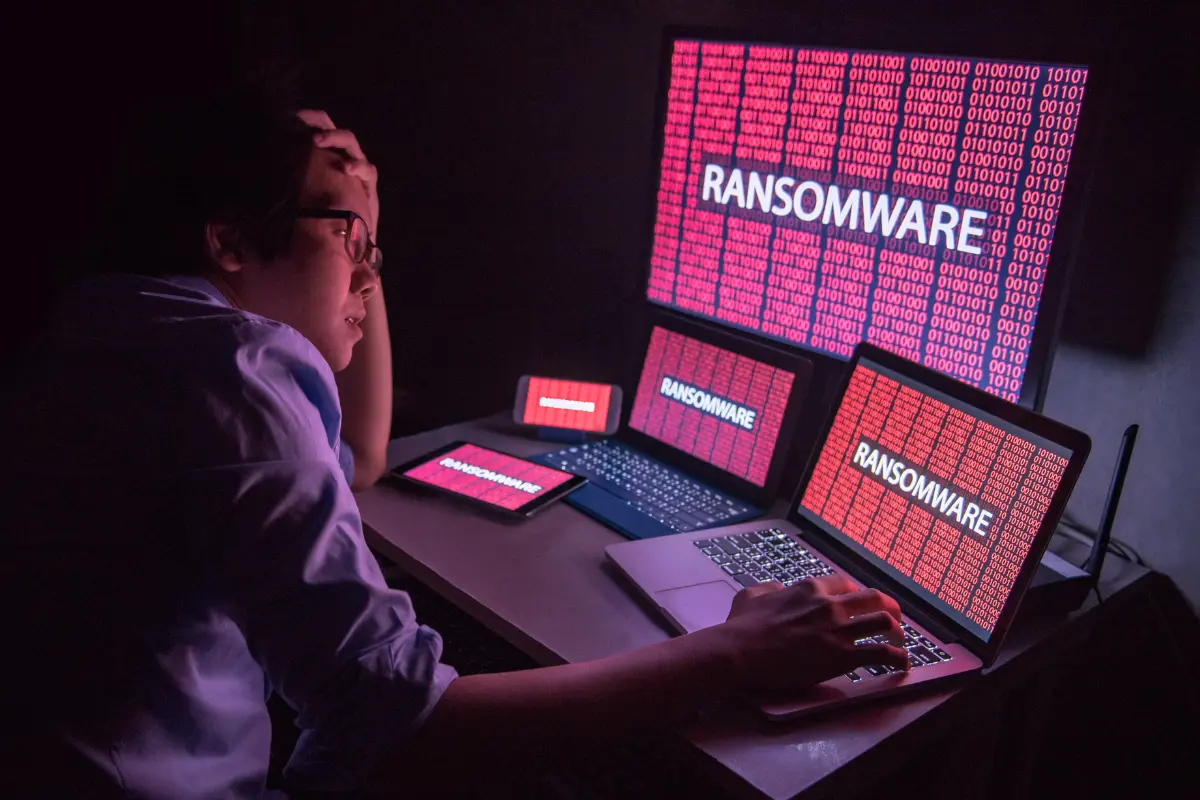Table of Contents
Ransomware attacks are not just a problem for large corporations. In fact, small businesses are increasingly becoming prime targets due to inadequate ransomware protection for small business setups. According to a report by Cybersecurity Ventures, a new organization falls victim to ransomware every 14 seconds, and a significant portion of these victims are small businesses. Why? Because many small businesses lack the robust cybersecurity measures that larger companies have, making them easier targets for cybercriminals.
Importance of Ransomware Protection for Small Businesses
A ransomware attack can be devastating for a small business. Financially, the costs can be sky-high, from paying the ransom to expenses for system restoration, data recovery, and implementing stronger security measures. Operationally, a business might come to a standstill, unable to access critical resources like customer databases and financial records, leading to significant revenue loss and disruptions.
Reputationally, the damage can be long-lasting. Losing customer trust due to a data breach can lead to a loss of business and damaged relationships, especially for small businesses that rely on word-of-mouth and local reputation. Given these risks, it’s crucial for small businesses to implement effective ransomware protection strategies. This guide will provide actionable steps to help safeguard your business against ransomware threats.
Understanding Ransomware

What is Ransomware?
Ransomware is malicious software that blocks access to a computer system or data until a ransom is paid, acting like a digital hostage situation where cybercriminals encrypt files and demand payment for their release.
Types of Ransomware
- Crypto Ransomware: Encrypts valuable files on a device, demanding a ransom for the decryption key, as seen in the 2017 WannaCry attack.
- Locker Ransomware: Locks users out of their devices entirely, displaying a ransom note and preventing access until payment is made.
- Ransomware as a Service (RaaS): Cybercriminals lease ransomware tools to others, who then carry out attacks and share the ransom with the developers.
How Ransomware Spreads
- Phishing Emails: Disguised emails trick users into downloading ransomware through malicious links or attachments.
- Malicious Downloads: Ransomware is bundled with software or media files from untrusted websites.
- Exploit Kits: Automated tools scan for system vulnerabilities to deliver ransomware.
- Remote Desktop Protocol (RDP) Vulnerabilities: Weak RDP setups allow attackers to gain access and manually install ransomware.
Why are Small Businesses Prime Targets for Ransomware?
Small businesses are often targeted by cybercriminals for ransomware attacks due to their limited cybersecurity resources and weaker defenses, making them easier to infiltrate and more likely to pay the ransom. Industries most affected include healthcare, education, finance, legal services, and retail, as they handle sensitive data and rely on continuous operations, making them prime targets for these attacks.
Implementing Ransomware Prevention Strategies
1. Employee Training and Awareness
Importance of Cybersecurity Awareness Training
Employees are often the first line of defense against ransomware attacks. Cybercriminals frequently target employees through phishing emails and social engineering tactics. Hence, comprehensive cybersecurity awareness training is vital for implementing ransomware protection for businesses. When employees understand the risks and know how to recognize potential threats, they become a crucial component of your overall security strategy.
There are a number of Security Awareness Training products available on the market that can help organizations boost their security by educating employees. Complorer stands out as a market leader in Security Awareness Training by offering a fully managed solution. It can be ideal as a ransomware protection tool for businesses due to its affordability and scalability. To learn more about Complorer, visit Complorer.com
Key Topics to Cover in Training Sessions
Training sessions should cover several critical topics:
- Phishing and Social Engineering
- Safe Browsing Practices
- Password Security
- Incident Reporting
2. Implementing Strong Password Policies
Importance of Strong, Unique Passwords
Strong, unique passwords are a fundamental element of cybersecurity. Passwords should be complex, combining upper and lower-case letters, numbers, and special characters. They should also be unique for each account to prevent a breach of one account from compromising others.
Use of Multi-Factor Authentication (MFA)

Multi-factor authentication (MFA) adds an extra layer of security by requiring users to provide two or more verification factors to gain access. This could be something they know (a password), something they have (a mobile device), or something they are (a fingerprint). MFA significantly reduces the risk of unauthorized access, even if passwords are compromised.
3. Regular Software Updates and Patch Management
Importance of Keeping Software and Systems Updated
Outdated software often contains vulnerabilities that can be exploited by ransomware and other types of malware. Keeping all software and systems updated is crucial for maintaining security.
How to Implement an Effective Patch Management Strategy
An effective patch management strategy involves regularly reviewing and applying software updates and patches. This can be managed through automated patch management tools or by designating a team to oversee the process. Critical updates should be applied as soon as they are available, while other updates can be scheduled during regular maintenance windows.
4. Email Security Measures
Implementing Spam Filters and Email Authentication Protocols (SPF, DKIM, DMARC)
Implementing robust spam filters can significantly reduce the number of phishing emails reaching your employees. Email authentication protocols like SPF (Sender Policy Framework), DKIM (DomainKeys Identified Mail), and DMARC (Domain-based Message Authentication, Reporting & Conformance) help verify the legitimacy of incoming emails and prevent email spoofing.
Using Email Encryption for Sensitive Information
Email encryption ensures that sensitive information sent via email is unreadable to anyone other than the intended recipient. Tools like Microsoft Outlook and Gmail offer built-in encryption options. For enhanced security, consider using third-party services like ProtonMail or Tutanota.
5. Network Security Practices
Importance of Firewalls and Intrusion Detection/Prevention Systems (IDS/IPS)
Firewalls are essential for blocking unauthorized access to your network, while IDS and IPS systems help detect and prevent malicious activity. Together, these tools create a robust defense against ransomware and other cyber threats.
Segmenting the Network to Contain Potential Breaches
Network segmentation involves dividing your network into smaller, isolated segments. This practice limits the spread of ransomware and other malware by containing the infection to a single segment. Critical systems and sensitive data should be placed in highly secure segments with restricted access.
Secure Remote Access and VPN Usage
With the rise of remote work, securing remote access has become more important than ever. Ensure that all remote connections are made through secure VPNs (Virtual Private Networks). VPNs encrypt data transmitted between remote users and your network, protecting it from interception and tampering.
Ransomware Detection and Response
1. Tools and Techniques for Ransomware Detection
- Antivirus and Anti-Malware Software: These tools can detect and block many types of ransomware before they cause damage. Regularly update them to ensure they recognize the latest threats.
- Endpoint Detection and Response (EDR): EDR solutions provide real-time monitoring and analysis of endpoint activities, enabling rapid detection and response to ransomware.
- Network Traffic Analysis: Monitoring network traffic for unusual patterns can help detect ransomware communication with command and control servers.
- File Integrity Monitoring (FIM): FIM tools track changes to critical system files, alerting you to unauthorized modifications that may indicate a ransomware attack.
Continuous monitoring is crucial for quickly detecting ransomware, as it allows for immediate identification and response to suspicious activity. Utilizing threat intelligence feeds helps anticipate emerging threats, while Security Information and Event Management (SIEM) systems, like Splunk, IBM QRadar, and ArcSight, analyze log data to detect anomalies and early signs of attacks, enhancing overall security posture.
2. Developing a Comprehensive Incident Response Plan
An incident response plan details the steps to take during a ransomware attack to minimize damage, reduce recovery time, and ensure a coordinated response. Key components include:
- Preparation: Form a response team, assign roles, and provide training and necessary tools.
- Identification: Set procedures to detect and confirm an attack through system monitoring and alert analysis.
- Containment: Define actions to isolate infected systems and prevent the spread.
- Eradication: Establish methods to remove ransomware from systems.
- Recovery: Outline steps to restore systems and data from backups.
- Lessons Learned: Conduct post-incident reviews to improve the plan.
Regularly test and update the incident response plan to ensure it addresses new threats and organizational changes, enhancing readiness and response effectiveness.
3. Isolating and Containing the Attack
When a ransomware attack is detected, it’s crucial to isolate infected systems immediately to prevent the malware from spreading. Steps to isolate infected systems include:
- Disconnect from the Network: Immediately disconnect the infected system from the network to stop the ransomware from communicating with its command and control server.
- Disable Wireless Connections: Turn off Wi-Fi, Bluetooth, and other wireless connections on the infected system.
- Power Down If Necessary: In some cases, powering down the infected system may be necessary to prevent further damage.
How to Prevent the Spread of Ransomware Within the Network
Preventing the spread of ransomware involves several proactive measures:
- Network Segmentation: Divide your network into segments to limit the spread of ransomware. Critical systems should be in isolated segments with strict access controls.
- Access Controls: Implement strict access controls to limit user permissions. Use the principle of least privilege to ensure that users only have access to the resources they need.
- Regular Backups: Maintain regular, secure backups of critical data. Ensure backups are stored offline and tested regularly to confirm they can be restored in the event of an attack.
4. Communication During an Attack
Clear and effective communication is vital during a ransomware attack. Internal communication ensures that employees know their roles and responsibilities, while external communication keeps stakeholders informed and maintains trust.
How to Inform Employees, Stakeholders, and Customers
- Employees: Inform them of their roles and actions, providing regular updates to prevent misinformation.
- Stakeholders: Notify key stakeholders, like board members, about the attack and mitigation efforts.
- Customers: Transparently communicate the attack’s impact and reassure them of the actions taken to safeguard their data.
Advanced Ransomware Protection Measures for Your Business
1. EDR and MDR Solutions
EDR tools are essential for protecting devices like desktops and laptops from ransomware. Key features include:
- Antivirus and Anti-Malware: Basic protection against known threats.
- Behavioral Analysis: Detects suspicious activities indicating ransomware.
- Threat Intelligence Integration: Blocks emerging threats with real-time data.
- EDR Capabilities: Advanced detection and response to cyber incidents.
Importance of Real-Time Threat Detection and Response
Real-time detection is crucial to stopping ransomware before it can spread, reducing downtime, and providing insights into attack details.
- Immediate Action: Stops ransomware before it can cause significant damage.
- Reduced Downtime: Minimizes the time systems are offline due to an attack.
- Enhanced Visibility: Provides detailed insights into how the attack occurred and which systems were affected.
Recommendations for choosing an Endpoint Protection Solution for your business
- Comprehensive Coverage: Look for robust protection against ransomware, malware, and phishing.
- Ease of Use: Choose solutions easy to deploy and manage for small teams.
- Scalability: Select a solution that grows with your business.
- Vendor Reputation: Opt for trusted vendors with proven cybersecurity expertise.

World-class EDR and MDR services provided by eBuilder Security allow access to cutting-edge technology, skilled cybersecurity professionals, and 24/7 threat protection, safeguarding your business from costly breaches and downtime.
2. Network Segmentation and Zero Trust Architecture
Benefits of Network Segmentation
Network segmentation divides your network into smaller sections, offering key advantages for ransomware protection:
- Containment: Limits the spread of ransomware to a single segment.
- Enhanced Security: Provides better control over network access.
- Improved Performance: Reduces congestion and improves traffic flow.
Implementing a Zero Trust Security Model
Zero trust operates on the principle of “never trust, always verify,” requiring strict verification for all access requests. Key steps include:
- Verify Every Request: Authenticate and authorize every access, no matter where it originates.
- Limit Access: Grant the least privilege necessary to perform tasks.
- Monitor Continuously: Track all network activity for suspicious behavior.
3. Cyber Insurance
What is Cyber Insurance and Why It’s Important
Cyber insurance helps businesses manage the financial fallout from cyber attacks like ransomware, covering costs like data recovery, business interruption, and legal fees.
Coverage Options and Considerations for Small Businesses
When choosing a policy, consider coverage for:
- Incident Response Costs: IT forensics, legal fees, and response actions.
- Business Interruption: Compensation for lost income during downtime.
- Data Recovery: Costs to restore systems and data affected by ransomware.
- Liability Coverage: Protection from lawsuits and claims due to data breaches.
How to Choose the Right Cyber Insurance Policy
- Assess Your Risks: Identify your specific cyber risks and potential impacts.
- Compare Policies: Review coverage limits, exclusions, and deductibles.
- Consult Experts: Get advice from cybersecurity and insurance professionals.
- Read the Fine Print: Understand what’s covered and any policy limitations.
Implementing these prevention strategies for your small business can prevent financial and reputational damage from ransomware attacks. Ransomware is a constant and evolving threat, so businesses must stay vigilant and proactive. Continuous education, regular updates, and improving security are essential. Remember, cybersecurity is an ongoing process—stay informed to keep your business resilient against ransomware and other threats.

